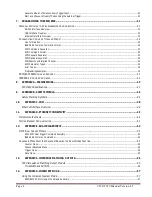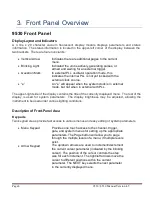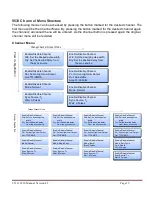
Page 12
9530/8530 Manual Version 4.5
Setting Pulse Output Parameters
There are two basic types of outputs available on the 9530:
a) TTL/CMOS
compatible outputs.
b)
Adjustable amplitude outputs.
Out:
Selects between TTL/CMOS mode and Adjustable
mode when both are available on a single output.
Pol:
Sets the voltage polarity of the pulse, active high or
active low.
*Note: All outputs are positive voltage as negative
voltages are not supported
Ampl:
In Adjustable mode the unloaded output voltage is set.
The actual output voltage will depend on the load
impedance. For example: If the load is 50
Ω the output
will be 50% of the stated voltage.
Using the Output Multiplexer
Each output channel includes a multiplexer which allows routing of any or all of the timer outputs to
the physical output. This allows double pulses and other complex pulse trains to be generated.
-HGFEDCBA-
MUX:
-00000101-
The multiplexer is represented by an “n” bit binary number as shown above. “N” is the number of
channels. Each bit represents a channel timer, which is enabled by setting the bit to one. In the
above example, timers A and C are combined on the current output.
Setting System Internal Rate Parameters
The internal T
0
period controls the fundamental output frequency of the system. Each channel may
be operated at submultiples of the fundamental frequency by using the channel duty cycle mode.
Source:
Sets the reference source for the internal
T
0
period.
Per:
Sets the internal
T
0
period.
To set the system Internal Rate press the Menu key, then use the arrow keys
to specify the
T
0
period.













































